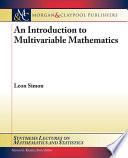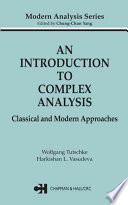
Introduction to the Analysis of Metric Spaces
Assuming a basic knowledge of real analysis and linear algebra, the student is given some familiarity with the axiomatic method in analysis and is shown the power of this method in exploiting the fundamental analysis structures underlying a variety of applications. Although the text is titled metric spaces, normed linear spaces are introduced immediately because this added structure is present in many examples and its recognition brings an interesting link with linear algebra; finite dimensional spaces are discussed earlier. It is intended that metric spaces be studied in some detail before general topology is begun. This follows the teaching principle of proceeding from the concrete to the more abstract. Graded exercises are provided at the end of each section and in each set the earlier exercises are designed to assist in the detection of the abstract structural properties in concrete examples while the latter are more conceptually sophisticated.
- ISBN 13 : 9780521359283
- ISBN 10 : 0521359287
- Judul : Introduction to the Analysis of Metric Spaces
- Pengarang : John R. Giles,
- Kategori : Mathematics
- Penerbit : Cambridge University press
- Bahasa : en
- Tahun : 1987
- Halaman : 257
- Halaman : 257
- Google Book : http://books.google.co.id/books?id=vBiy_eqlkZQC&dq=intitle:Introduction+To+Real+Analysis&hl=&source=gbs_api
-
Ketersediaan :
Although the text is titled metric spaces, normed linear spaces are introduced immediately because this added structure is present in many examples and its recognition develops an interesting link with linear algebra.









